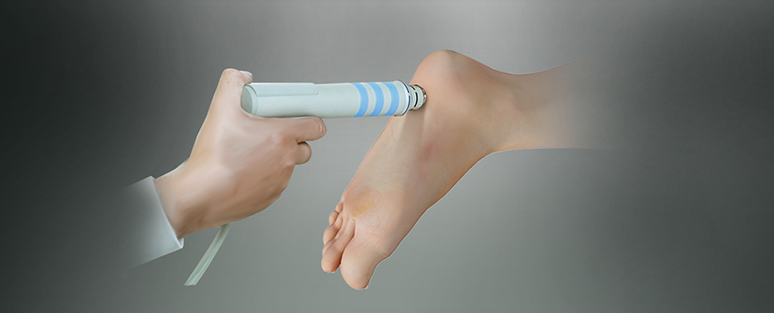Fractures & Trauma
A fracture is a medical condition in which a bone is cracked or broken. It is a break in the continuity of the bone. While many fractures are the result of high force impact or stress, bone fracture can also occur as a result of certain medical conditions that weaken the bones, such as osteoporosis.
The word "Fracture" implies to broken bone. A bone may get fractured completely or partially and it is caused commonly from trauma due to fall, motor vehicle accident or sports. Thinning of the bone due to osteoporosis in the elderly can cause the bone to break easily. Overuse injuries are common cause of stress fractures in athletes.
Types of fractures include:
- Nondisplaced
- Displaced
- Simple fractures or comminuted fractures
- Open fractures
Fracture Healing
Our body reacts to a fracture by protecting the injured area with a blood clot and callus or fibrous tissue. Bone cells begin forming on the either side of the fracture line. These cells grow towards each other and thus close the fracture.
Treatment
The objective of early fracture management is to temporarily stabilize the bone as this minimizes further bleeding and diminishes the pain of the fractured bone edges moving. The next step in fracture management is the definitive reduction of the fracture and its maintenance. It is important to ensure that the involved part of the body returns to its function after fracture heals. To achieve this, maintenance of fracture reduction with immobilization technique is done by either non-operative or surgical method, depending on the type of fracture. If there fracture is open, the sources of infection are removed with emergent surgery to remove sources of infection such as foreign bodies and dead tissues.
Non-operative (closed) therapy comprises of primarily of casting and splinting after closed reduction.
Surgical (open) therapy
- Open Reduction and Internal Fixation (ORIF)
This is a surgical procedure in which the fracture site is adequately exposed and reduction of fracture is done. Internal fixation is done with devices such as Kirschner wires, plates and screws, and intramedullary nails. - External fixation
External fixation is a procedure in which the fracture stabilization is done at a distance from the site of fracture with pins that go through the skin and attach to a frame.
External fixation is performed in the following conditions:
- Open fractures with extensive soft-tissue involvement
- Burns and soft tissue injuries
- Pelvic fractures
- Comminuted and unstable fractures
- Fractures having large bony deficits
- Limb-lengthening procedures
- Some fractures with infection or non-union
Rehabilitation
Fractures may take several weeks to months to heal completely. You should limit your activities even after the removal of cast or brace so that the bone become solid enough to bear the stress. Rehabilitation program involves exercises and gradual increase in activity levels until the process of healing is complete.












